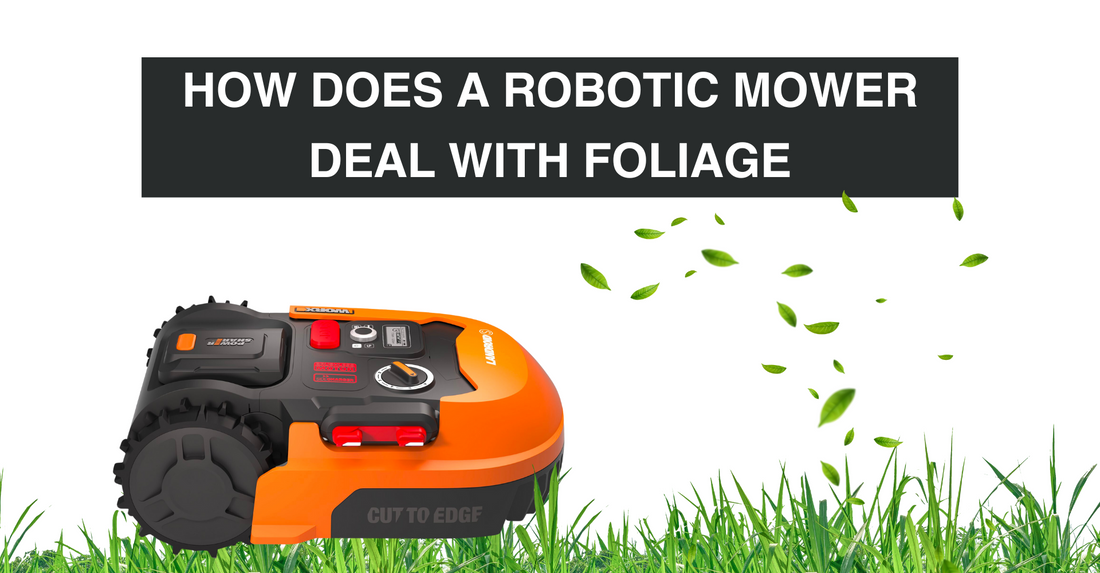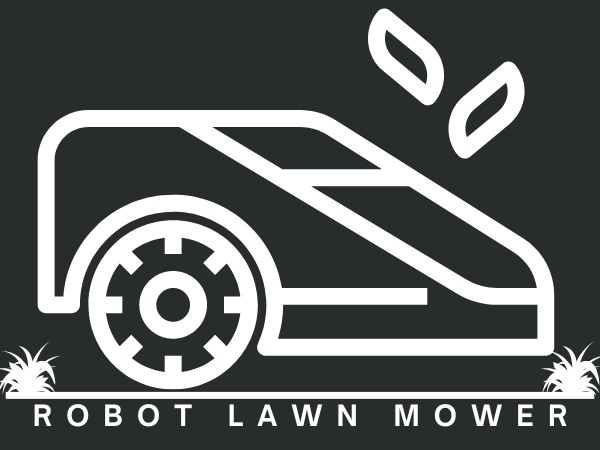
How Does a Robotic Lawnmower Deal with Foliage? (leaves, flax vines)
When deciding on whether or not to purchase a robotic lawnmower, many question what happens to the foliage and grass clippings. Will the robotic mower be able to handle it? Or will they need to manually rake and collect the clippings, fallen leaves, branches or fruit from nearby trees, leading to more work than a ride on or traditional push mower?
In this article we will discuss whether a robotic mower can handle leaves, grass clippings, and other obstacles, helping you determine if a robotic mower can maintain your lawn's appearance with minimal effort.
How do robot mowers detect obstacles:
Robotic lawn mowers are designed to automate the task of mowing the grass, saving you from the physical exertion involved in maintaining your lawn. There are many brands on the market, equipped with different technology and sensors, all affecting their capabilities.
Robot mowers can detect obstacles in a range of different ways, the most common are through vision, bump or ultrasonic detection.
Vision: Through a camera, the robot mower can detect an obstacle, allowing them to go around it without making contact.
Bump Sensors: These sensors detect an obstacle only after the mower has made contact, prompting it to change direction.
Ultrasonic sensors: These detect obstacles before the mower bumps into them.
The sensors are effective, but there are limits. Small or low-lying obstacles may not be able to be detected by vision, bump or ultrasonic. For example, a small branch could pass under the mower, but it could cause damage to the blade disc. To avoid this, exclusion zones can be set up, but this may require additional effort to manage as some obstacles are not confirmed to a certain area such as dog toys.
What happens when robotic lawnmowers mow over leaves?
The blades of a robotic mower are sharp enough to slice a variety of different grass types effectively. When a robot mower encounters leaves, they can efficiently chop them into small pieces. The chopped leaves can then be mulched into the ground, where they act as a natural fertiliser or are blown away by the wind. However, it needs to be kept in mind, this is going to dull the blades significantly faster, requiring more frequent replacements and if there are too many leaves, they can get stuck around the blade disc, reducing the mower's cutting efficiency and put extra strain on the motor.
If your lawn has a couple of trees, the robot mower should be able to handle the leaves without an issue, keeping in mind it will require more frequent blade changes. However, if your lawn is blanket covered in leaves, these will need to be cleared to avoid putting stress on the motor of the robot mower.
Do I need to rake the grass clippings?
No, the benefit of owning a robot lawn mower is you do not need to rake the grass clippings. The robot mower operates on a frequent basis, the grass is consistently chopped into fine, tiny pieces. These small clippings are then mulched and absorbed back into the soil, enriching it with valuable nutrients (self-fertilisation). Not only does the robotic mower keep your lawn well-trimmed, but it also contributes to its overall health and fertility.
Robot mower vs fruit trees?
Robot mowers can handle a range of obstacles but the following is likely to happen depending on the fruit size:
- Small fruit: Will be run over without much issue, the blades might become coated with a sticky residue, reducing the cutting efficiency
- Larger and harder fruit: The mower may fail to detect it or might try and run over it and cut it. This could damage the blade disc, blades or mower. Harder fruit puts stress on the mower's motor.
It’s recommended to clear the lawn of fruit as initially it might manage it well but over time the stress this puts on the mower and constant contact with the blade disc might cause damage.
What happens when a robotic mower runs over a branch?
This is generally not good but it depends on the size of the branch. If it’s large enough, the robot mower will detect and avoid it. Smaller branches or twigs might get run over and left on the lawn, but they could also become stuck in the blade disc, requiring clearing before it can continue. In extreme cases, it can cause damage to the robot mower.
It’s advisable to remove any branches, flax or twigs from your property before deploying the robot mower to avoid potential issues and the need for manual rescuing.
Can a robotic lawnmower cut through vines?
Vines are any plants that grow in trailing or runners. They are thick and often require support by climbing a tendrils or twining on trees.
Robotic mowers are not intended to be a comprehensive gardening replacement. Vines, shrubbery, branches and flax require specific attention and care that a robotic mower may not provide. There is the potential for the vines of long leaves to wrap around the blade disc and require care to remove. Trim overhanging branches and shrubs, create a clear and obstacle-free path for the mower to navigate. This will enhance the efficiency and effectiveness of the robotic mower.
Can a robot mower cut wet grass?
Yes, a robot mower can cut damp grass, but it should not be used in the rain or in very wet conditions. If the ground is too wet and your lawn doesn’t drain well, the mower could turn the lawn into mud, leading to issues with traction and performance.
Compared to ride-on mowers or push mowers, robot lawn mowers are lighter so they aren’t going to create as much immediate damage, but due to their frequent cutting style, consistent operation on wet areas may eventually cause the same, if not worse damage.
Choosing the right robotic mower for your lawn:
When it comes to choosing a robotic mower, there are a number of factors that need to be considered specific to your needs and property type. A great option is the LawnMaster X7 which has a floating blade disc, adjustable cutting speed and a swivel wheel which reduces the likelihood of track marks from frequent turning. Its advanced obstacle detection using dual vision cameras and versatile features make it ideal for navigating through various obstacles.
If you’re unsure about your needs, feel free to reach out to us at support@robotlawnmower.nz with photos and descriptions of your lawn’s condition for personalised advice.
By properly maintaining your robotic mower and following these guidelines, you can ensure that it continues to operate at peak capacity, keeping your yard looking neat and tidy without performing the laborious task of maintaining it yourself.
